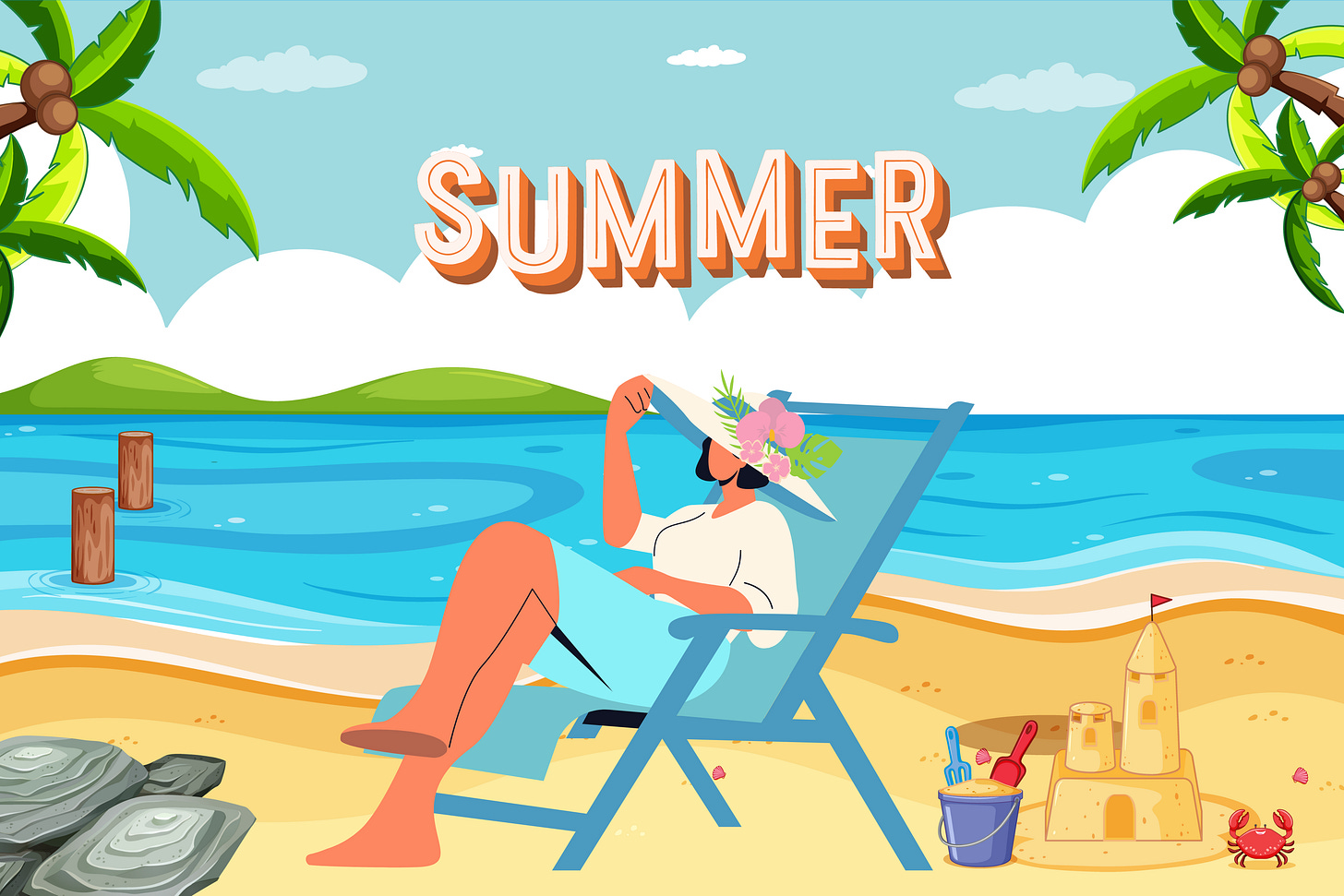How to Get the Most Out of Your Summer
Being intentional with your downtime ensures you actually get some well-deserved R&R.
Many college students use the summer break to work or take additional classes. For those of us who are artists, the break can also be a great time to work on our creative projects.
But, if you’re fortunate enough to get some time off, summer is the time for some well-deserved R&R. And after the work of the semester, the brain needs a break. None of us can go, go, go all the time without experiencing burnout.
Thus, breaks can be an effective way to recharge our creative batteries. That matters because creative burnout is just as real as college or work burnout. We need creative input, which comes from doing other enjoyable activities — like taking ourselves on artist’s dates — as much as we need to engage in creative output.
So, even if you need to work this summer — whether in a job, summer classes, or on a creative project — make sure you take care of your brain and mental health by building in some necessary downtime.
A little planning goes a long way
Last summer, I wrote about my plan to avoid overworking. As a teacher, I often use my summers to work on my personal creative projects, which I don’t have as much time for during the school year. So last year, I decided to take the pressure off myself to write an entire novel in the summer and let myself rest instead.
But I’ve since discovered that if you plan nothing at all — even if doing “nothing” is your goal — downtime can quickly get away from you, and you can end up feeling like all that free time was “wasted.”
So now, I plan my breaks so that I can move through them with intention. I avoid overscheduling and ensure my time is flexible, but I also “pencil” in how I want to spend my time. That way, I can keep my promises to myself to actually get rest and relaxation.
Here’s how I approach my summer schedule:
1. I avoid over-planning.
To ensure I get plenty of downtime, I don’t pressure myself with too many projects or even one big project. For example, instead of planning to write an entire novel, I might plan to write just an outline.
I know I can accomplish that in three months without feeling overwhelmed. And, if I finish my goal with time left over, I can always work ahead. The point is to feel as though I’ve accomplished something without experiencing time stress.
2. I make a plan for downtime.
It may seem counterintuitive, but to ensure I have plenty of downtime, I schedule it. This can be as simple as blocking out a few hours a day of “me time” or reserving one day a week for yourself.
Spend this time in whatever way helps you feel recovered, whether that means getting lost in a novel or binging your favorite TV shows.
3. I write a seasonal “bucket list.”
Summer bucket lists may feel reminiscent of childhood, but they can be just as valuable for adults. A bucket list helps put your focus on the fun activities you want to ensure you get to do this summer.
So brainstorm a list of all your “must-dos,” and then schedule them into your calendar. Don't skip this second step, as having these activities blocked out in your calendar ensures you actually do them. (I learned this one the hard way.)
If you have kiddos at home or are just a kid at heart like myself, I have a superhero-themed summer bucket list printable in the shop that can help with your planning.
The takeaway
Planning your summer days might feel like the last thing you want to do; after all, isn’t the point to spend time relaxing and doing “nothing”?
And I’d never tell you to overbook yourself by scheduling every hour of the day. I’ve learned that’s a recipe for burnout.
But being intentional with your downtime ensures you can transition into the fall feeling renewed and refreshed without letting all those summer days slip through your fingers, leaving you wondering where they went.



